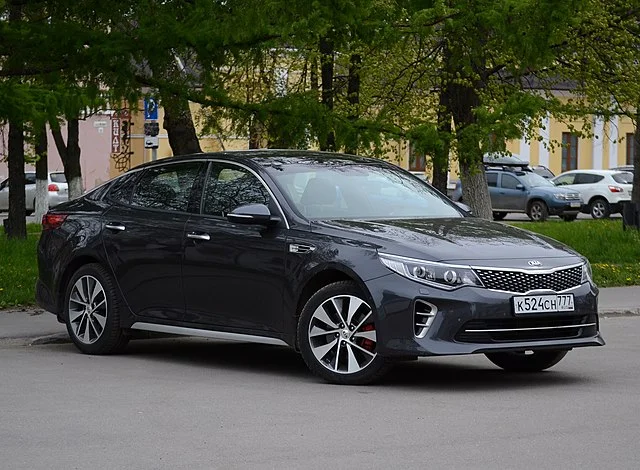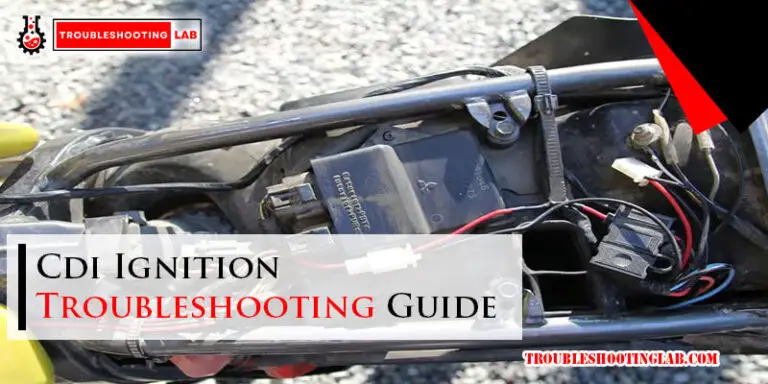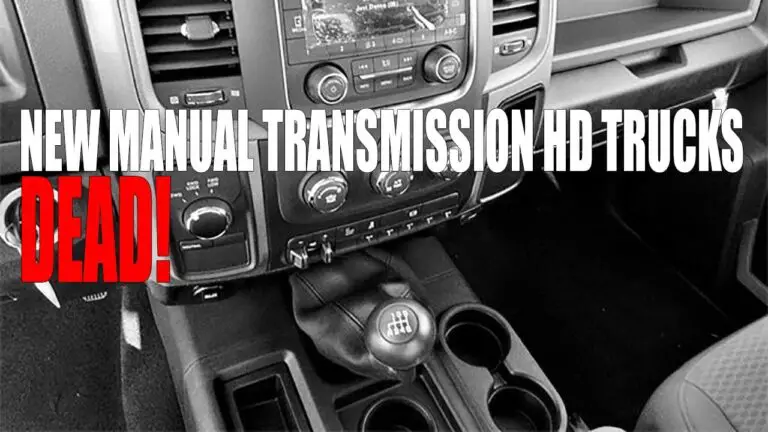Kia Optima Troubleshooting: Essential Tips to Fix Common Issues
Owning a Kia Optima comes with its perks. It’s reliable and stylish.
But like any car, issues can arise. When your Kia Optima shows signs of trouble, it can be frustrating. You might notice strange noises, warning lights, or performance issues. Understanding the common problems and how to troubleshoot them can save you time and money.
This guide will help you identify and fix common Kia Optima issues. From engine problems to electrical glitches, we’ve got you covered. With our tips, you can keep your Optima running smoothly and avoid costly repairs. Let’s dive in and learn how to handle these challenges effectively.
Credit: repairpal.com
Starting Problems
Experiencing starting problems with your Kia Optima can be frustrating. Knowing the common issues can help you troubleshoot and get back on the road. Let’s look at some typical starting problems and how to address them.
Battery Issues
A dead or weak battery is a common cause of starting problems. Check the battery terminals for corrosion. Clean them if necessary. Also, ensure the battery is fully charged. If the battery is old, consider replacing it. A battery tester can help you determine its condition.
Starter Motor Failures
The starter motor is essential for starting your Kia Optima. Listen for a clicking sound when turning the key. If you hear it, the starter motor might be failing. Inspect the wiring and connections. Make sure they are secure and free of damage. If the starter motor is faulty, it may need replacement.
Engine Performance
Maintaining the engine performance of your Kia Optima is essential for a smooth ride. A well-functioning engine ensures better fuel efficiency and longevity of your car. Recognizing signs of trouble early can save you from costly repairs.
Power Loss
Experiencing power loss can be frustrating. It often indicates a problem with the fuel system. A clogged fuel filter can restrict fuel flow. This makes your engine struggle to perform. Another common issue is a faulty spark plug. Spark plugs ignite the fuel-air mixture in the engine. If they wear out, the engine may misfire and lose power.
Inspecting the air filter is also important. A dirty air filter blocks airflow to the engine. This reduces power and efficiency. Replacing these components can often resolve power loss issues. Regular maintenance is key.
Overheating
Overheating is a serious issue for any vehicle. The Kia Optima is no exception. Overheating can damage the engine. Low coolant levels often cause this problem. Check your coolant reservoir regularly. Refill it with the recommended coolant type.
A malfunctioning thermostat can also lead to overheating. The thermostat regulates engine temperature. If it fails, the engine may overheat. Inspect the radiator for blockages. A clogged radiator cannot cool the engine properly. Keeping the cooling system in good shape prevents overheating.
Transmission Issues
The Kia Optima is a reliable car. Yet, some owners face transmission issues. These problems can affect your driving experience. Below, we discuss common transmission issues. We focus on shifting problems and fluid leaks.
Shifting Problems
One common issue is shifting problems. Your Kia Optima may struggle to shift gears. This can cause jerky movements. It can also delay gear changes. There are a few reasons for these problems:
- Low transmission fluid
- Faulty transmission control module
- Worn-out clutch plates
Check the transmission fluid level first. It should be at the correct level. If it’s low, add more fluid. Ensure you use the recommended type. If the fluid level is fine, it may be a mechanical problem. Visit a mechanic to inspect the control module or clutch plates.
Fluid Leaks
Fluid leaks are another common issue. Leaks can lead to low transmission fluid levels. This can cause serious damage to the transmission. Look for these signs of a fluid leak:
- Red or brown puddles under the car
- Burnt smell from the transmission fluid
- Difficulty shifting gears
Inspect the transmission pan gasket. It may be damaged or loose. Tighten or replace it if needed. Also, check the transmission cooler lines. These can crack and leak fluid. Replace any damaged lines immediately.
Regular maintenance can prevent most transmission issues. Always use the correct transmission fluid. Follow the recommended service intervals. This helps keep your Kia Optima running smoothly.
Credit: repairpal.com
Electrical System Failures
The electrical system of your Kia Optima is complex. It powers many essential functions. When this system fails, it can cause various issues. These problems can range from minor inconveniences to major safety concerns. Understanding common electrical problems can help you fix them quickly.
Blown Fuses
Blown fuses are a common electrical issue. They can cause various components to stop working. This includes lights, radios, and power windows. To check for a blown fuse, look at the fuse box. It is usually under the dashboard or in the engine bay. Replace any blown fuse with one of the same rating.
Faulty Wiring
Faulty wiring can lead to electrical problems. Wires can become frayed or damaged over time. This can cause shorts, leading to malfunctioning components. Inspect the wiring for any visible damage. If you find any, it is best to have a professional repair it. Faulty wiring can be a fire hazard.
Brake Troubles
Having issues with your Kia Optima’s brakes? Brake troubles can be serious. They affect the safety of your car. Understanding the common brake problems can help. Below are some common issues and their solutions.
Squeaking Sounds
A common issue is squeaking sounds from the brakes. This is often due to worn brake pads. When brake pads wear thin, they make noise. Here are some causes and solutions:
- Worn Brake Pads: Check the thickness. Replace if thin.
- Dust and Dirt: Clean the brake components.
- Moisture: Noise can be from wet brakes. This usually stops after a few uses.
Spongy Pedal
Another issue is a spongy brake pedal. This means the pedal feels soft or goes to the floor. This can be dangerous. Below are some causes and solutions:
- Air in Brake Lines: Bleed the brakes to remove air.
- Brake Fluid Leak: Check for leaks. Refill if needed.
- Old Brake Fluid: Replace the brake fluid regularly.
Always ensure your brakes are in good condition. Regular maintenance can prevent many issues.
Suspension And Steering
The suspension and steering systems of the Kia Optima play crucial roles. They ensure a smooth ride and precise handling. Problems in these areas can affect comfort and safety. Let’s explore common issues and troubleshooting tips.
Noise Over Bumps
Hearing noise when driving over bumps? This could be due to worn-out suspension parts. Common culprits include shocks, struts, or bushings. These parts wear out over time and need replacement.
Check for loose bolts or damaged components. Sometimes, tightening bolts can solve the issue. Inspect the suspension system regularly. Early detection prevents major problems and costly repairs.
Steering Wheel Vibrations
Steering wheel vibrations are annoying and unsafe. They usually indicate issues with the tires or alignment. Uneven tire wear or imbalance can cause vibrations. Ensure your tires are properly inflated and balanced.
Another cause could be worn-out steering components. Check the tie rods and ball joints. If they are damaged, replace them immediately. Regular maintenance of these parts ensures smooth steering.
Interior And Comfort
The interior and comfort of the Kia Optima are essential for a pleasant driving experience. Common issues can affect your comfort. Here, we discuss troubleshooting tips for common interior and comfort issues. These include problems with the AC and faulty seats.
Ac Not Working
A malfunctioning AC can make your drive uncomfortable. Here are common causes and solutions for AC problems in your Kia Optima.
- Blown Fuse: Check the fuse box for any blown fuses. Replace if necessary.
- Refrigerant Levels: Low refrigerant can cause AC issues. Refill if needed.
- Compressor Problems: The AC compressor might be faulty. Inspect it for wear and tear.
- Clogged Air Filters: Dirty filters can block airflow. Clean or replace them.
Faulty Seats
Faulty seats can affect your comfort during long drives. Here are some common issues and how to fix them.
| Issue | Possible Cause | Solution |
|---|---|---|
| Seat Adjustment Not Working | Electrical Problem | Check and repair electrical connections. |
| Seat Heaters Not Working | Blown Fuse | Replace the blown fuse. |
| Uncomfortable Seat Cushion | Worn Foam Padding | Replace the foam padding. |
Addressing these issues can enhance your driving experience. Regular maintenance can prevent many of these problems. Keep your Kia Optima in top shape for a more enjoyable ride.

Credit: www.copilotsearch.com
Frequently Asked Questions
How To Reset The Check Engine Light On A Kia Optima?
You can reset the check engine light by disconnecting the battery for a few minutes.
Why Is My Kia Optima Overheating?
Overheating can be caused by low coolant, a faulty thermostat, or a broken water pump.
What Does The Red Oil Light Mean In A Kia Optima?
The red oil light indicates low oil pressure. Check the oil level and add oil if needed.
Why Is My Kia Optima’s Ac Not Blowing Cold Air?
This can be due to low refrigerant, a faulty compressor, or a clogged air filter.
How To Troubleshoot A Kia Optima That Won’t Start?
Check the battery, starter, and fuel system. Ensure the battery is charged and connections are tight.
Conclusion
Troubleshooting a Kia Optima can be simple with the right steps. Start with basic checks like battery and fuses. Listen for unusual sounds. Consult the vehicle manual for guidance. Regular maintenance prevents many issues. Seek professional help if problems persist.
Keeping your Kia Optima in good shape ensures a smooth ride. Enjoy a hassle-free driving experience by addressing issues early. Stay informed, stay safe, and enjoy your Kia Optima!






